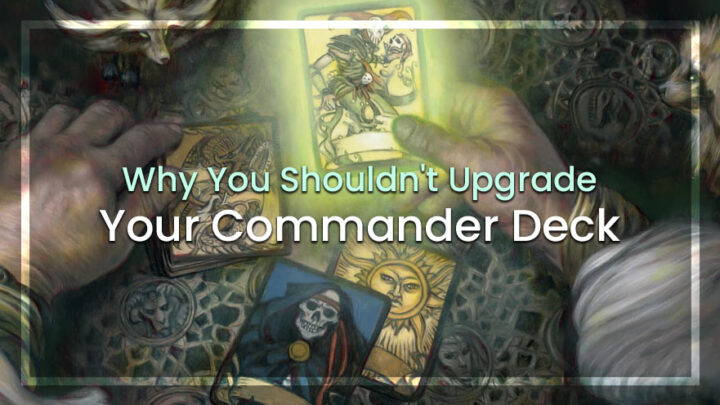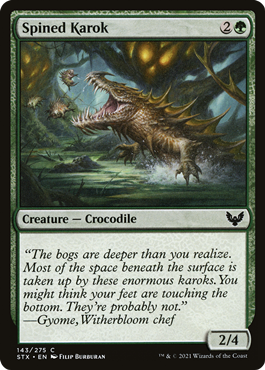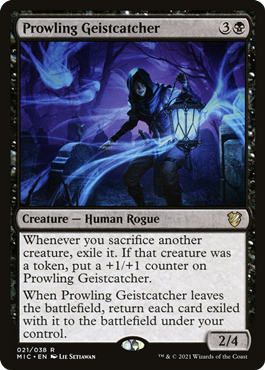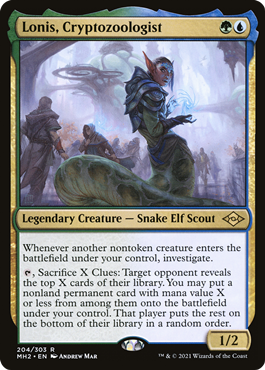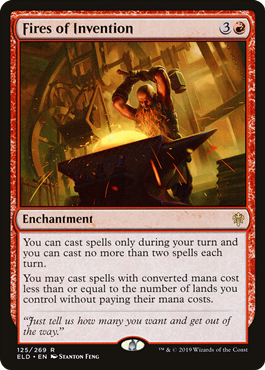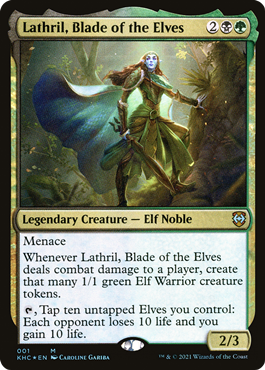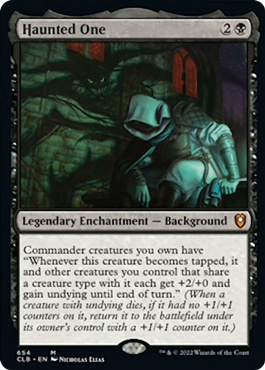It’s normal to want to upgrade your Commander decks over time. But is it really necessary? Kristen evaluates the process and offers an alternative.
There are three* main aspects to engaging with Commander as a format: Deckbuilding, Gameplay and Upgrading your deck. We cover Deckbuilding and Gameplay quite often here at Card Kingdom, as do many creative Commander players across the internet. Upgrading decks is something that’s covered a little less.
While precon upgrades are ten a penny these days (thanks to preconstructed decks being ten a penny), content that discusses upgrading decks is largely constrained to deck primers for competitive decks. I’ve covered the odd upgrade article, but in general, upgrading is a personal experience. It’s personal for many reasons, not least that the individual power level and aim of a deck is as unique to the builder as the 100 cards that make up the deck’s fingerprint.
*There’s also a secret fourth aspect to engaging with EDH, which is getting involved in theorycrafting and discourse. Don’t delve too greedily and too deeply into this, or you’ll forget what grass feels like. Go find a pod and play a game!
UPGRADING YOUR COMMANDER DECK
Upgrading Commander decks used to be a slow process. Reprints weren’t delivered as frequently as they are these days, sprinkled as they are throughout Masters sets, preconstructed Commander decks, Secret Lairs and, now, Commander specific sets like Commander Legends. This meant the average player was gated more — financially and in card availability — in their quest to power up a deck over time.
Pre War of the Spark, we also had far fewer product releases in a year. Between the dozens of Secret Lairs and the rest, there’s never been more cards to consider for Commander decks.
And what cards they are! We’re spoiled as Commander players, with R&D now focused on delivering great Commander cards in every product. The double-edged sword of being the most popular format is we are absolutely the main customer for every product. But whether you think that’s a good or bad thing matters little here — what matters is that the process for upgrading a Commander deck has changed massively.
While before players had a few cards to consider each Standard set, alongside maybe a supplementary product once or twice a year, there are now dozens of potential picks every month. What this means, in practice, is upgrading a Commander deck has changed from an occasional tinkering to a constant calibration process that would make even Garrus Vakarian baulk.
LET ME STAND NEXT TO YOUR FIRE (DESIGN)
So, on one side, we have more frequent reprints (that are arguably needed as the player base grows and card prices need to stay down). On the other hand? F.I.R.E design.
In short, cards are more pushed than they used to be, to excite players new and old alike. In practice, this means far more of a set is going to be at the power level of Commander. Just look at the last time a vanilla creature was in Standard: it was last rotation, in Strixhaven.
You know what else it means? It means that with the average power level of Commander cards turned up a notch, they are likely to spike the power level of your deck higher when you make edits. Dropping a card like Dockside Extortionist, or Solitude, or Yawgmoth, Thran Physician into a deck will have far more impact than the cards of yesteryear.
Cards that are so powerful on their own are still then lifted by many other cards in a deck, increasing their power further. Prowling Geistcatcher might look like a fun upgrade to your reanimator deck, but if the right cards are already in the deck, you’re risking upping the power level by a significant degree. Obscure lines like sacrificing your board to Altar of Dementia in someone else’s turn to try and mill this into your bin so you can combo off suddenly become available.
Let’s take my Lonis deck. The original goal of the deck was to create a Simic deck that wasn’t so… well, Simic. I kept the power level of individual cards down, eschewing best in slot spells. I did have to bake some synergy into the deck, though, so I added the following cards:
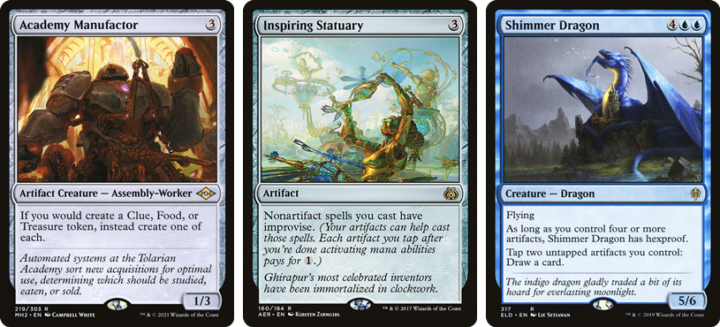
Now, while they might initially look super fun and cool — and they are, I assure you — they also take the deck up from the level of an average modern precon to something… stronger. Drawing these cards in a game makes the deck perform so much better, in fact, it cleanly performs above the desired pitch.
I chose Lonis as an example, too, because these kinds of cards are ones that make perfect sense in a Lonis deck, are cards that might see less play outside of a Lonis deck and are cards that, in a vacuum, need a lot of support to perform (Academy Manufactor excluded. That thing is busted).
When this issue arises during deckbuilding, decisions must be made: is it acceptable to have some cards that spike a deck’s performance? How many can fit before the deck ends up stronger than intended? You’ll even face the disappointing reality that some decks don’t really work at lower power levels without key cards.
It’s not just during deckbuilding that this FIRE-y hurdle arises — it’s present while upgrading a deck, and I’d say it has the potential to cause more issues, especially if you don’t intend to change the power level of your deck.
WHY YOU SHOULDN’T UPGRADE YOUR COMMANDER DECK
With the frequency of upgrades being thrust toward us by each product, the sheer power of new cards and the increasing availability of format staples as reprints, deciding what to add to your Commander decks can be overwhelming. The answer might be to just… not upgrade your deck.
Instead, maybe we should leave decks as a snapshot; a moment in time. I know many friends who do exactly this, opting to build with what’s available at the time and not revisiting it again.
Those friends have way more self restraint than you and I, I imagine, and I don’t think that’s necessarily a solution that works for everyone. So, reader, I hear you ask: what about all these cool new cards I want to put in my deck?
Well, instead of upgrading your deck every few weeks, maybe rebuild your deck every so often instead.
THE BENEFITS OF REBUILDING COMMANDER DECKS
Rebuilding a deck instead of working on it iteratively has many benefits, and it’s partially due to the sheer volume of product and new cards that the idea of less frequent rebuilds even has merit in the first place. Iterative work has many benefits, too, but I’m here to argue that you should start to care a little less, playtest a little more and enjoy the following benefits:
- Less stress: no constant upgrading and the inevitable cutting of cards from multiple decks every few weeks means you can unplug more. I know you probably enjoy the process, like me, but it can get overwhelming when you have many decks and like to keep on top of previews.
- Enjoying the present: you’ve worked hard to get those cards and you should enjoy them. Being more present is a great way to find balance in life, and not living weeks or even months ahead thinking about previews and cards you’ve preordered means you can enjoy the fruits of your work. You built that deck, so enjoy playing it.
- Better testing: with less frequent iteration comes more time to test cards. You can play more games before making changes, which gives you much more data on whether a card is good or not for your build. Often cutting cards is so difficult because you haven’t played a deck enough to know what to kick to the curb.
- Less accidental power creep: the more you play with your deck, the more of an idea you get of whether it’s meeting expectations. Adding in random upgrades too frequently can make the power level more volatile and muddy the data on whether you’re happy with it or not.
- A better end product: rebuilding gives you a more consistent and unified end result than iteration. When considering new cards, it’s best to do so while brewing and evaluating different synergies and sub-themes. This is much easier than when iterating on the fly.
Ultimately, with rebuilding, you can get a sense for what you enjoy about a deck and make sure you bake that in when including new cards. It can also give you time to think about if adding too many new cards might change the direction of your build.
Whether you embrace that and make the changes or instead take that forward to a new deck entirely is up to you, and a fun part of the process. Rebuilding is something I’d consider every six to twelve months. You don’t need to do it any sooner than that.
I’ve got a Lathril deck that leans into the life drain mechanic, avoiding the done-to-death overrun win conditions Elves are usually known for. Despite not having upgraded it since Modern Horizons 2, when I added Yavimaya, Cradle of Growth, it’s still performing admirably.
I’ve had many opportunities to upgrade it since: Jaheira, Friend of the Forest, Shadowheart, Dark Justiciar and the Backgrounds from Commander Legends: Battle for Baldur’s Gate; Leaf-Crowned Visionary from Dominaria United; Gala Greeters from Streets of New Capenna; even picking up an Allosaurus Shepherd or Concordant Crossroads reprint from Double Masters 2.
When you add all of those possibilities to the “maybeboard” of cards I ended up with after my initial brewing process, it’s a veritable cornucopia of options. Too many options. I’ll sit down and rebuild it someday soon when the mood takes me.
I really want to try out Haunted One, after all. But until then? I’d rather it wasn’t taking up too much of my bandwidth thinking about constant, unending upgrades. I enjoy the deck now, so why the rush to change it?
Let me know if you’ve taken a step back from constant upgrades on Twitter.

Kristen is Card Kingdom’s Head Writer and a member of the Commander Format Panel. Formerly a competitive Pokémon TCG grinder, she has been playing Magic since Shadows Over Innistrad, which in her opinion, was a great set to start with. When she’s not taking names with Equipment and Aggro strategies in Commander, she loves to play any form of Limited.

